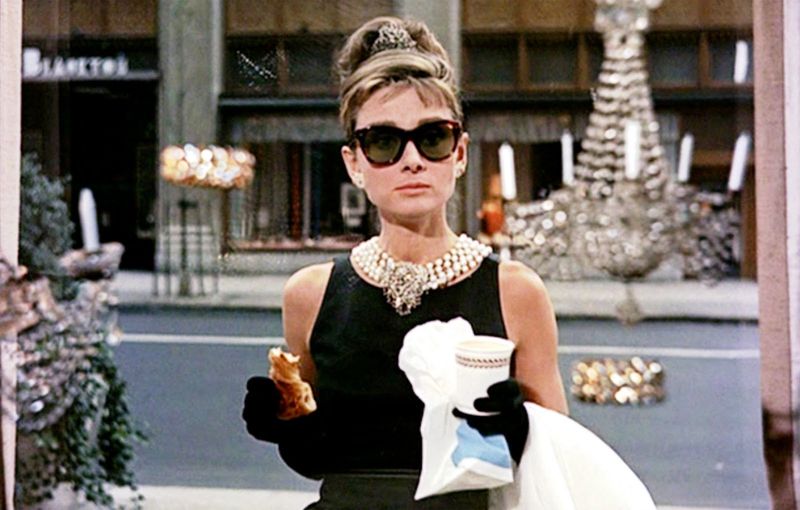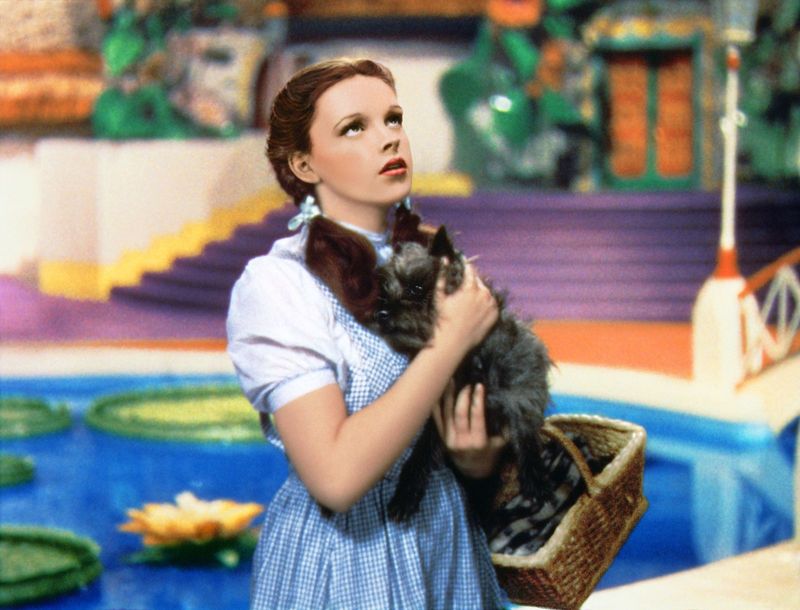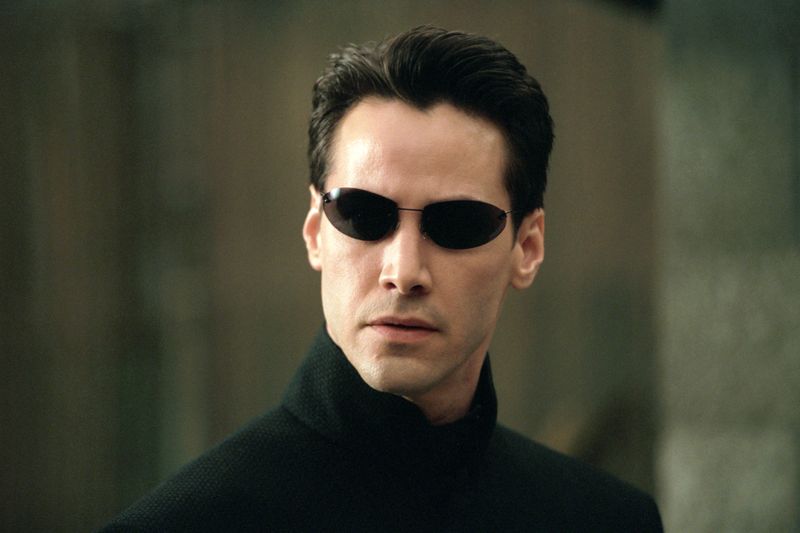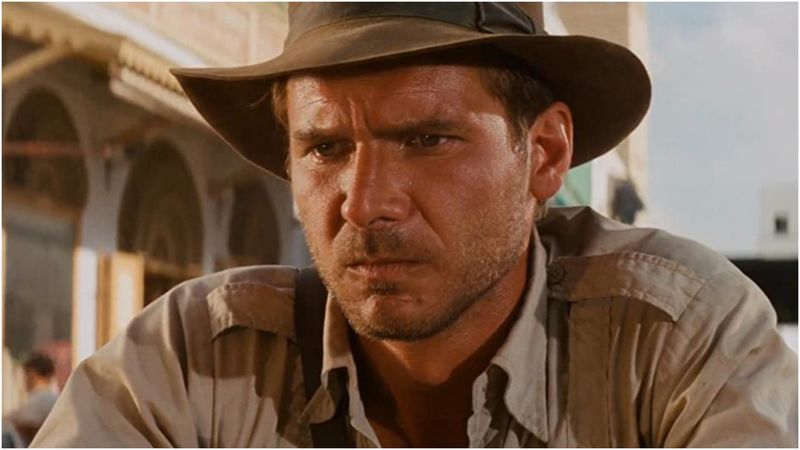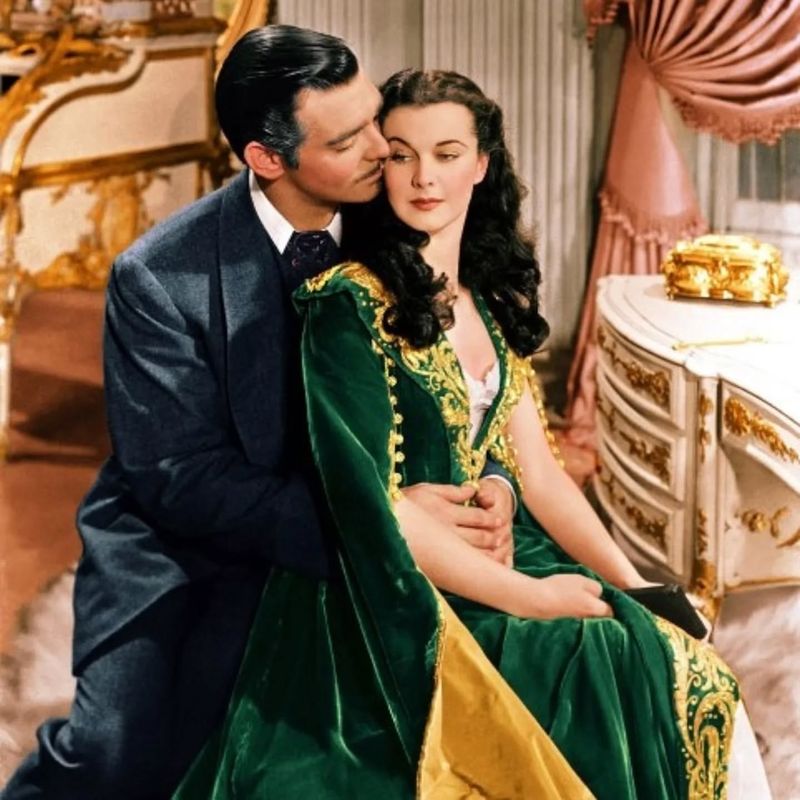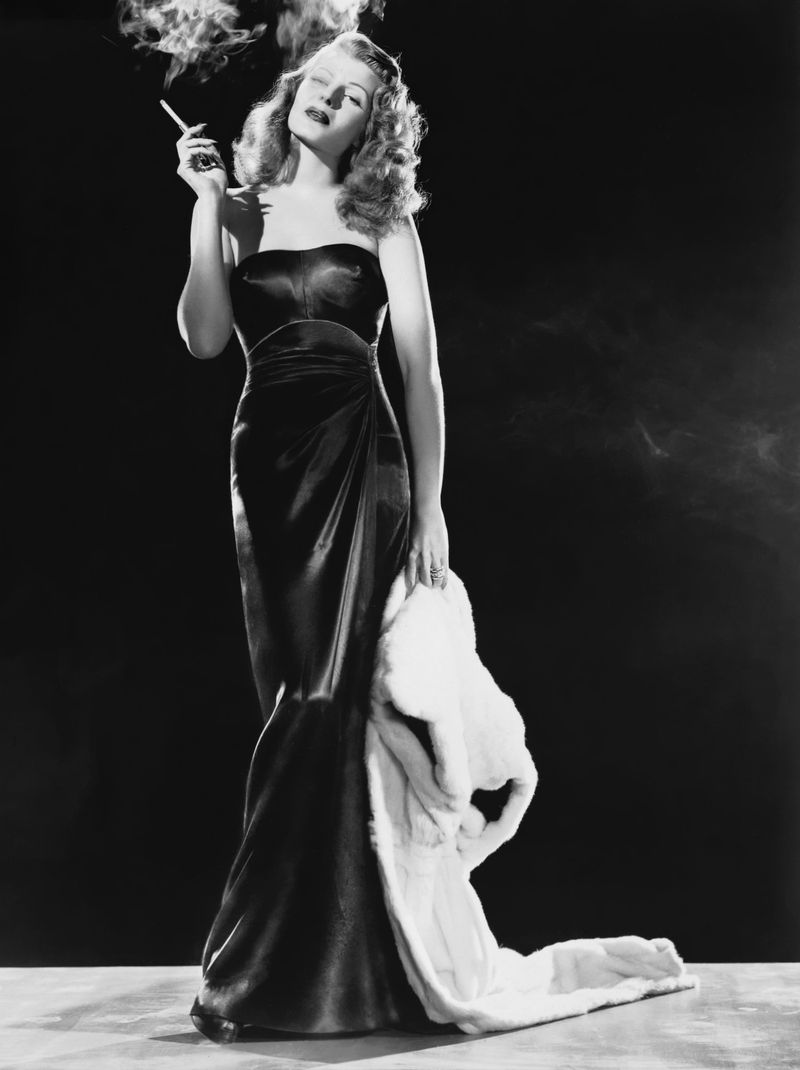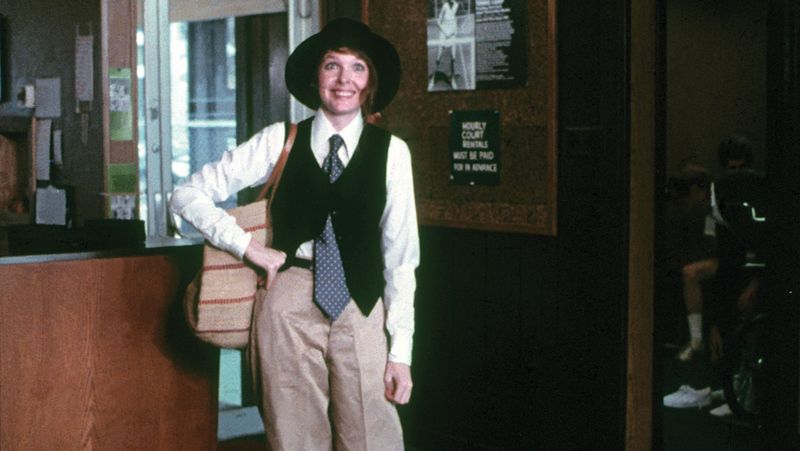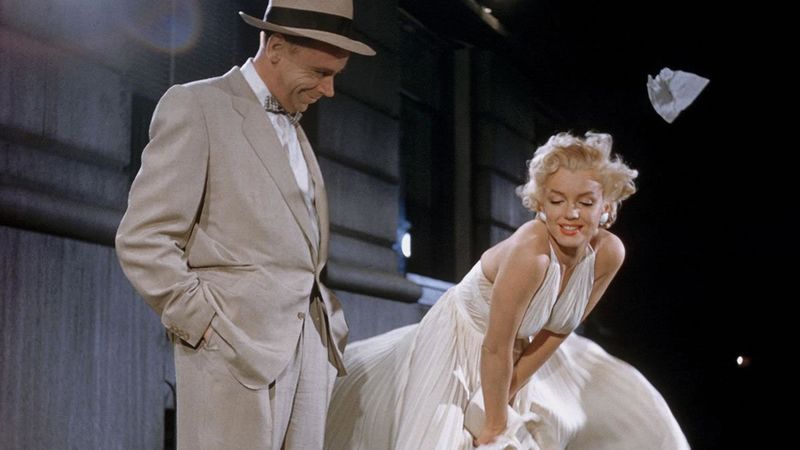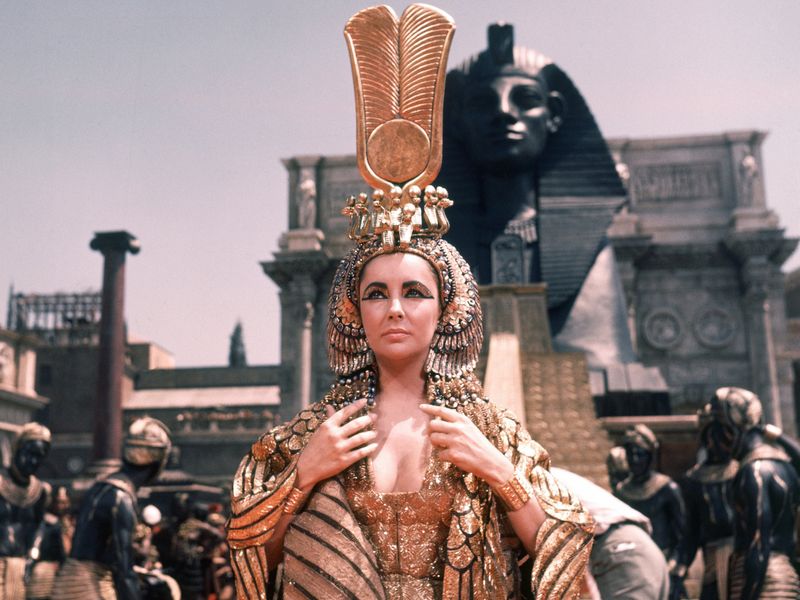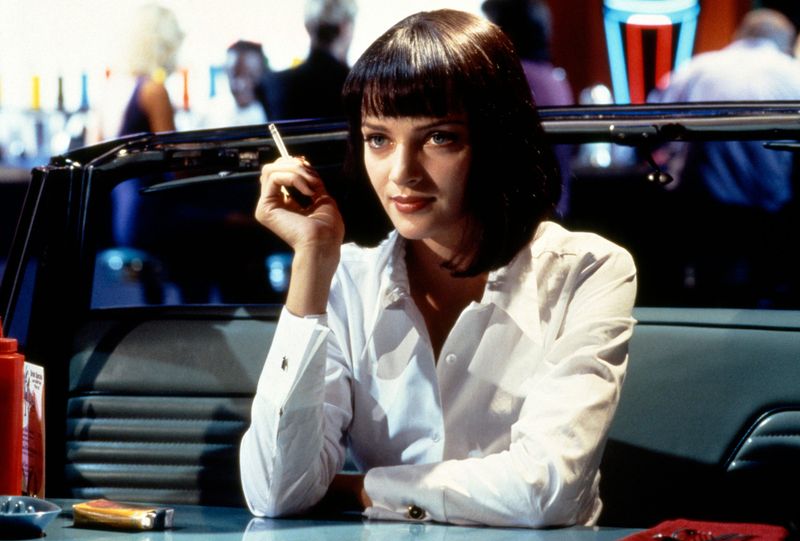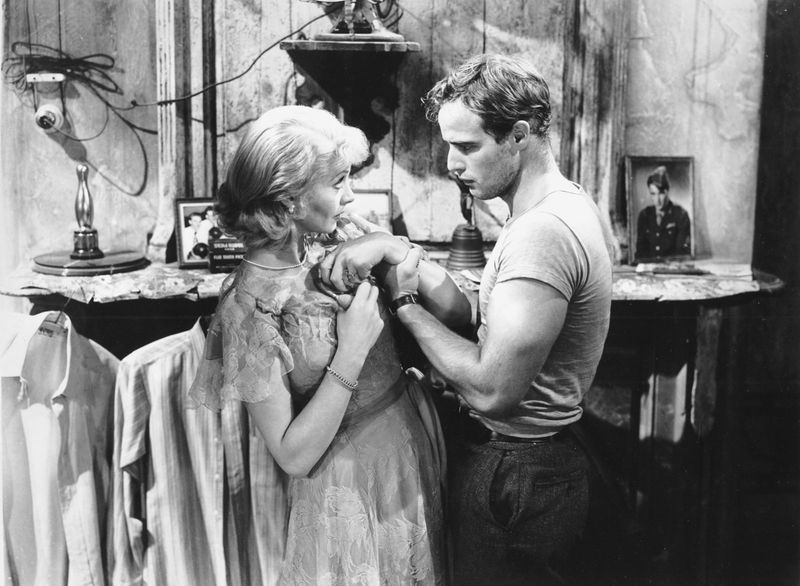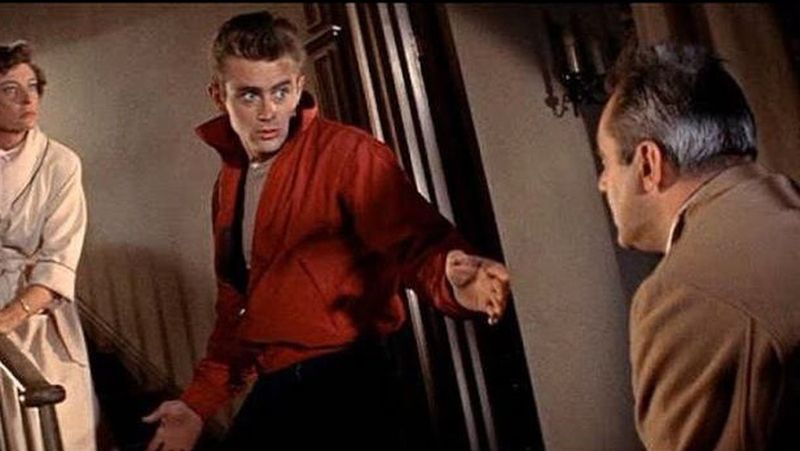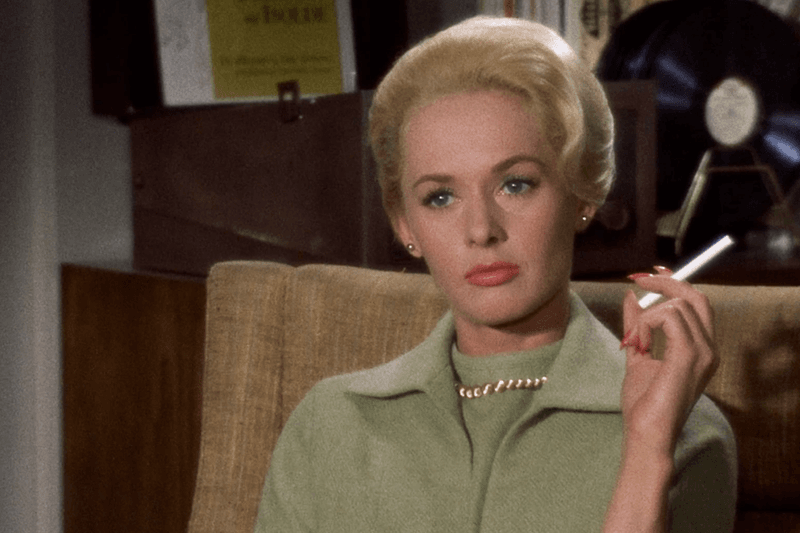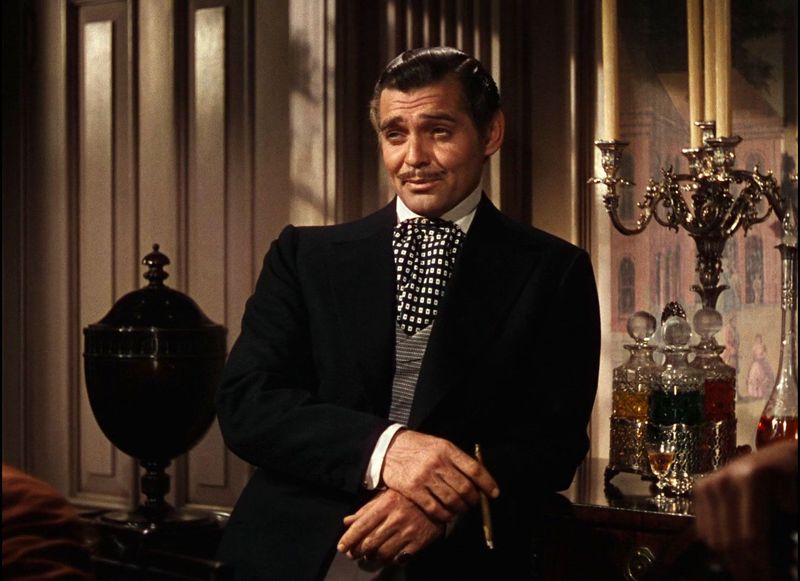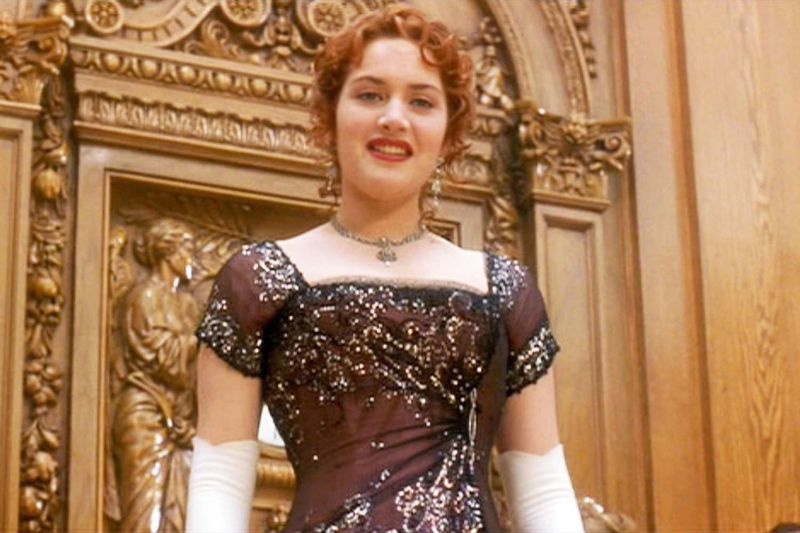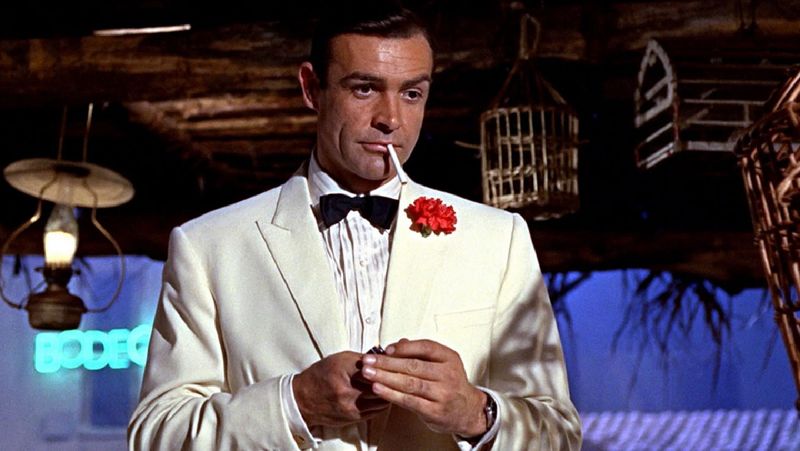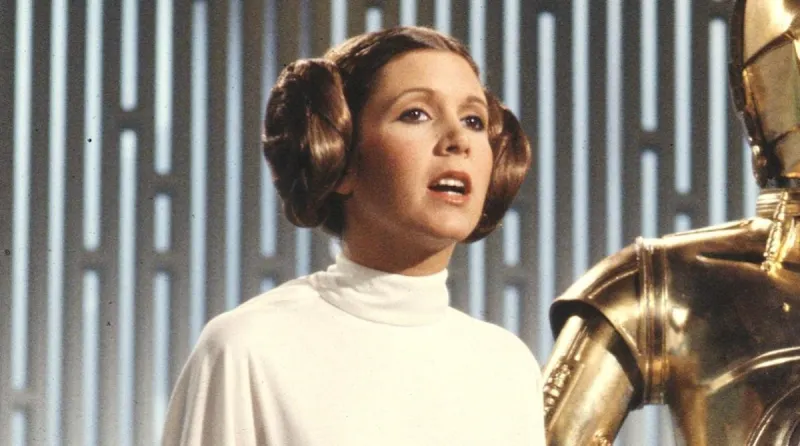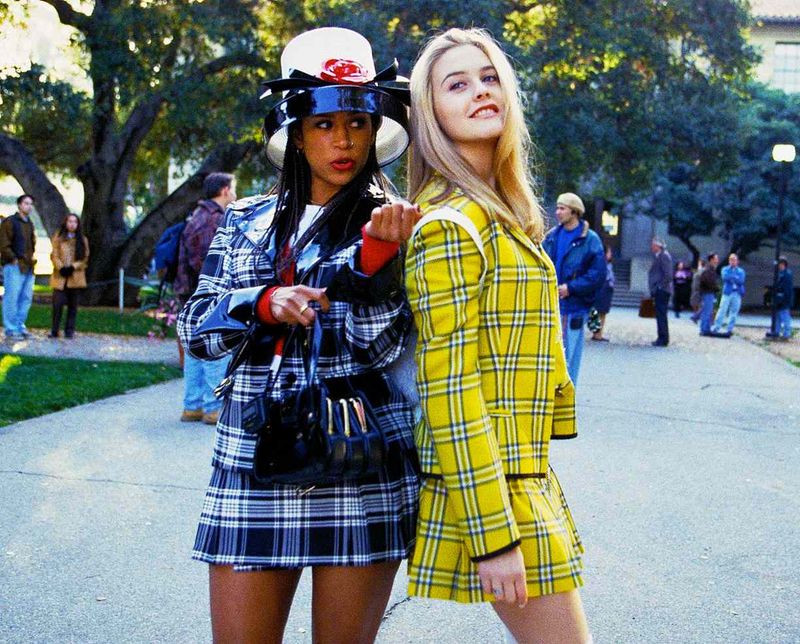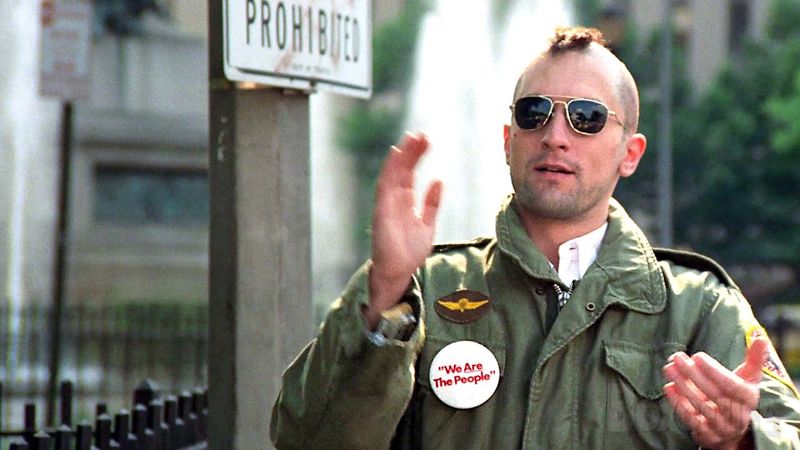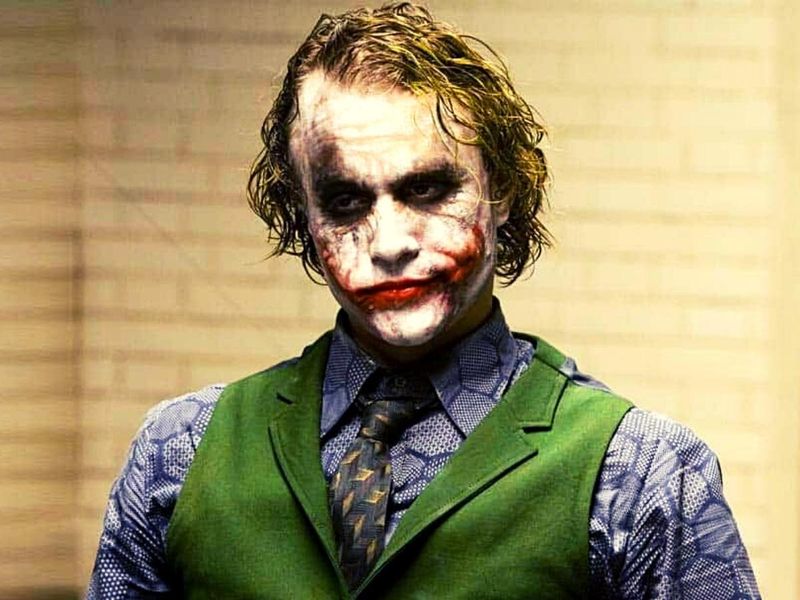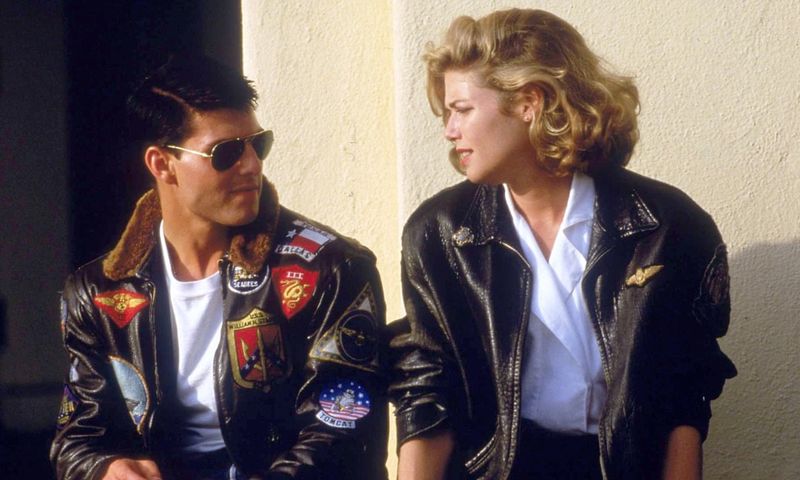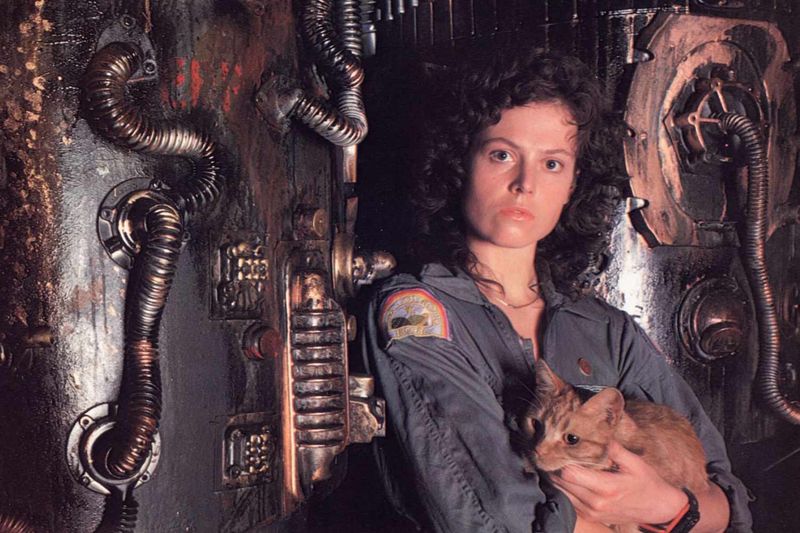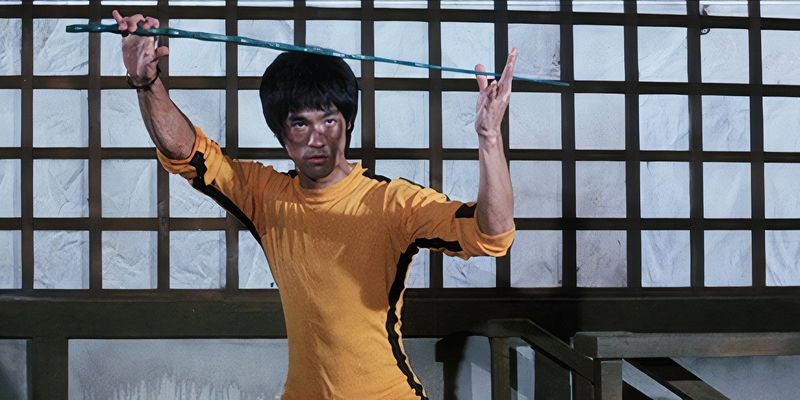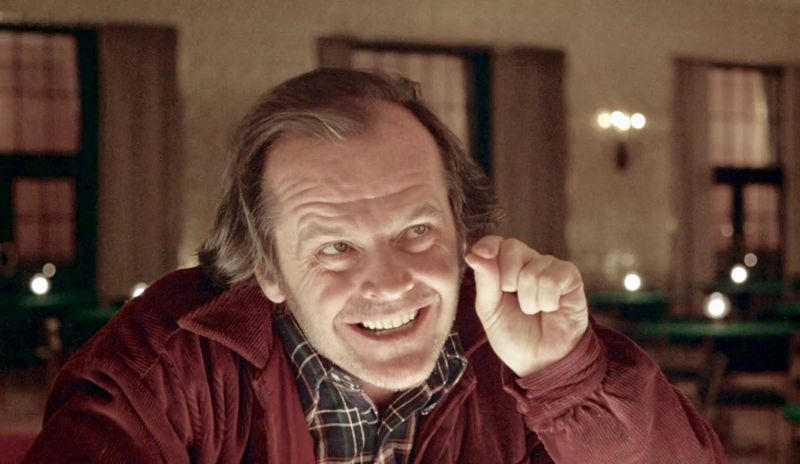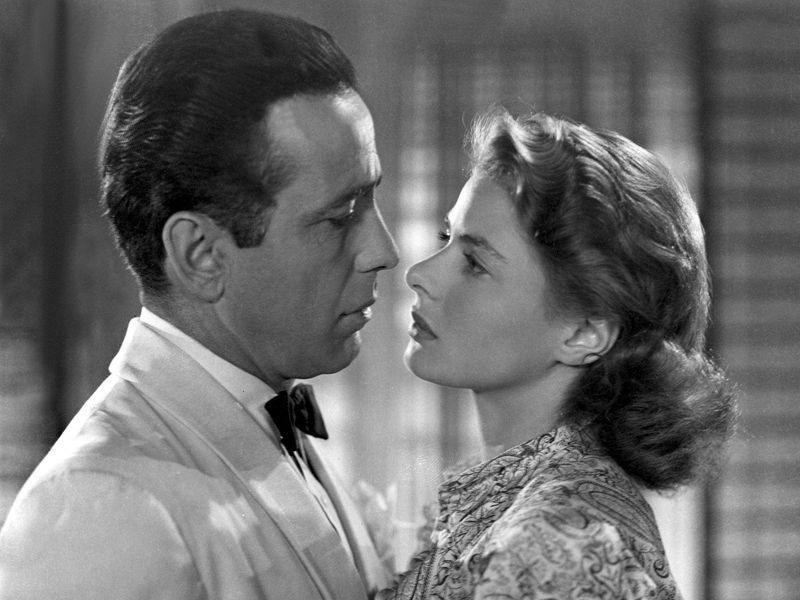Cinema has gifted us with unforgettable moments, many of which are defined by iconic fashion. These outfits do more than clothe characters; they encapsulate eras, define personalities, and sometimes, spark a global fashion craze.
From elegant gowns to rebellious leather jackets, the following list explores 27 iconic movie outfits that left an indelible mark on film history.
Each ensemble tells a story, offering a unique glimpse into the character’s world and the era of the movie. Join us as we celebrate the fusion of film and fashion through these legendary costumes.
1. Audrey Hepburn in Breakfast at Tiffany’s
Audrey Hepburn’s black Givenchy dress in “Breakfast at Tiffany’s” is synonymous with elegance and sophistication. The dress, paired with a pearl necklace and oversized sunglasses, captures the essence of Holly Golightly, a character that embodies free spirit and mystery.
This outfit became a timeless symbol of style, influencing fashion even decades later. Its simplicity and elegance make it a go-to look for those aiming to channel chic sophistication.
Standing in front of Tiffany & Co., Hepburn’s ensemble became iconic not just in film, but in fashion history, leaving a legacy of everlasting glamour.
2. Judy Garland in The Wizard of Oz
Dorothy’s blue gingham dress and ruby slippers captured the imagination of audiences worldwide in “The Wizard of Oz.” This wholesome outfit symbolized her innocence and journey of adventure.
The ruby slippers, in particular, became a powerful symbol of the movie, representing magic and the idea that home is where the heart is. Garland’s portrayal of Dorothy and her iconic attire remain an emblem of classic cinema.
The outfit continues to inspire costumes and fashion, a testament to its timeless appeal and significance in film history.
3. Keanu Reeves in The Matrix
Keanu Reeves’ black leather trench coat in “The Matrix” defines cool, futuristic fashion. Paired with sleek sunglasses, it became the signature look for Neo, the film’s protagonist.
This ensemble captured the movie’s themes of reality and illusion, blending style with philosophical depth. It quickly became a cultural phenomenon, influencing fashion trends and embodying the film’s cutting-edge aesthetic.
Reeves’ portrayal and the iconic attire have left a lasting impact, making the trench coat synonymous with the film’s innovative storytelling and visual flair.
4. Harrison Ford in Indiana Jones
Indiana Jones’ rugged look, complete with fedora and leather jacket, is a staple of adventure cinema. Harrison Ford’s portrayal brought charm and grit to the character, making this outfit legendary.
The fedora became a symbol of Jones’ adventurous spirit, while the leather jacket and whip added to his rugged, no-nonsense persona. This combination defined an era of action heroes.
The outfit’s practicality and style have made it a favorite among fans, inspiring countless adventurers and cosplayers, and solidifying its place in cinematic history.
5. Vivien Leigh in Gone with the Wind
Scarlett O’Hara’s green velvet dress in “Gone with the Wind” is a testament to character and era. Vivien Leigh’s performance brought the headstrong Southern belle to life, with this dress symbolizing resilience.
The dress, crafted from curtains, showcases Scarlett’s resourcefulness and determination amidst the Civil War’s hardships. Its rich colors and elegant design reflect her indomitable spirit.
This costume has become as iconic as the film itself, representing the intersection of fashion and narrative, and remains a favorite in cinematic costume history.
6. John Travolta in Saturday Night Fever
John Travolta’s white disco suit in “Saturday Night Fever” encapsulates the disco era’s vibrant spirit. As Tony Manero, Travolta’s dance moves and iconic attire symbolized the carefree and exuberant lifestyle of the 1970s.
The suit, with its sharp lines and bold style, became synonymous with the disco movement, influencing fashion trends far beyond the film’s release.
This ensemble remains a symbol of the era’s music and culture, highlighting the transformative power of fashion in film and its ability to capture the zeitgeist.
7. Rita Hayworth in Gilda
Rita Hayworth’s black satin gown in “Gilda” is a symbol of cinematic glamour and allure. The gown, paired with long gloves, perfectly encapsulates the sultry and mysterious nature of her character. It’s a scene-stealer that leaves a lasting impression.
The sleek silhouette of the gown emphasizes Hayworth’s elegance, making it a timeless piece that continues to inspire fashion lovers. Its sophistication is matched by Hayworth’s captivating performance, creating an unforgettable cinematic moment.
This outfit has left a lasting legacy in both film and fashion, influencing red carpet styles and evening wear designs for decades. It’s a quintessential example of Hollywood glamour.
8. Diane Keaton in Annie Hall
Diane Keaton’s unique style in “Annie Hall” revolutionized women’s fashion with its androgynous flair. Her character’s eclectic mix of menswear, including vests and ties, became an enduring symbol of individuality.
The layered outfit captured the essence of 1970s New York, reflecting the character’s quirky and independent spirit. Keaton’s influence on fashion was profound, inspiring women to embrace a more relaxed and personalized style.
The ensemble remains a testament to the power of film fashion to break norms and redefine elegance, leaving a lasting legacy in both cinema and fashion.
9. Marilyn Monroe in The Seven Year Itch
Marilyn Monroe’s white halterneck dress in “The Seven Year Itch” is one of cinema’s most memorable visuals. The scene where the dress billows up over a subway grate is etched into pop culture.
This moment epitomized Monroe’s charm and charisma, making the dress an everlasting icon of film fashion. The playful yet sensual design was perfect for portraying her character’s alluring nature.
The dress transcended the movie, becoming a symbol of Monroe’s enduring allure and the golden age of Hollywood, inspiring countless recreations and homages in popular culture.
10. Elizabeth Taylor in Cleopatra
Elizabeth Taylor’s portrayal of “Cleopatra” was as mesmerizing as her costumes. The lavish gold headdress and intricately designed gowns captured the opulence of ancient Egypt.
Taylor’s costumes were not just about luxury; they represented Cleopatra’s power and allure. The attention to detail in the wardrobe design made the character’s presence unforgettable.
These outfits became synonymous with the film’s grandeur, making a lasting impression in the world of cinematic fashion, and establishing a benchmark for historical costume design.
11. Uma Thurman in Pulp Fiction
Uma Thurman’s simplistic yet striking look in “Pulp Fiction” became instantly iconic. Her white shirt and black bob haircut were a perfect match for the film’s cool, edgy vibe.
The minimalistic outfit underscored her character’s enigmatic allure, making it a standout moment in cinema. This look, paired with the famous dance scene, left an indelible mark on pop culture.
Thurman’s portrayal and the ensemble’s timeless appeal continue to inspire fashion and film enthusiasts, highlighting the power of simplicity in creating lasting impact.
12. Marlon Brando in A Streetcar Named Desire
Marlon Brando’s white T-shirt in “A Streetcar Named Desire” redefined masculinity on screen. His raw performance as Stanley Kowalski, combined with the simple outfit, made a powerful statement.
The T-shirt became a symbol of rugged allure, showcasing Brando’s intense charisma and changing perceptions of male fashion. It was a pivotal moment in film, emphasizing character through wardrobe.
Brando’s portrayal remains influential, with the outfit becoming a timeless reference in fashion and film, symbolizing the intersection of simplicity and dramatic impact.
13. James Dean in Rebel Without a Cause
James Dean’s red jacket in “Rebel Without a Cause” is a symbol of youthful rebellion. This outfit, combined with his brooding personality, captured the spirit of 1950s teenage angst. The red jacket has since become synonymous with a rebellious attitude.
Worn over a simple white t-shirt and paired with jeans, Dean’s look was effortlessly cool. The ensemble speaks volumes without trying too hard, making it a timeless fashion statement. Since the film’s release, this look has inspired countless imitations in both film and popular culture.
The outfit’s legacy is profound, embodying a sense of freedom and individuality that resonates with audiences even today. It remains an iconic representation of a pivotal moment in cinematic and fashion history.
14. Tippi Hedren in The Birds
Tippi Hedren’s green suit in Alfred Hitchcock’s “The Birds” is as memorable as the film itself. The suit’s color and style were meticulously chosen to reflect Hedren’s character’s elegance and poise. It stands out against the film’s suspenseful backdrop.
The tailored suit, complete with a pencil skirt and matching jacket, exemplifies 1960s fashion sophistication. It’s a perfect blend of simplicity and elegance, showcasing Hedren’s character as composed yet vulnerable.
This outfit has become a classic example of how costume design can enhance a film’s narrative, making it an unforgettable part of movie history. It continues to influence fashion designers and filmmakers alike.
15. Clark Gable in Gone with the Wind
Clark Gable’s portrayal of Rhett Butler in “Gone with the Wind” was marked by his impeccable fashion. The gray Southern gentleman suit embodied charm and sophistication, defining his character’s roguish allure.
Gable’s outfit was not just about style; it reflected the complex layers of Rhett’s persona, balancing elegance with a hint of rebellion.
The costume remains iconic, symbolizing the film’s grandeur and the timeless appeal of classic Hollywood fashion, making it an enduring reference in both film and sartorial history.
16. Kate Winslet in Titanic
Kate Winslet’s red evening gown in “Titanic” is a cinematic symbol of romance and tragedy. Her character, Rose, wore the dress during pivotal moments, making it a key visual element of the film.
The gown’s rich colors and intricate design emphasized Rose’s elegance and the opulence of the Titanic’s era, contrasting with the unfolding disaster.
Winslet’s portrayal and the iconic gown continue to captivate audiences, embodying the film’s emotional depth and historical grandeur, marking a significant moment in movie fashion.
17. Sean Connery in Goldfinger
Sean Connery’s tuxedo in “Goldfinger” defined the image of sophistication and class. As James Bond, Connery’s attire was a perfect blend of elegance and danger, making it an unforgettable film costume.
The suit, with its sharp tailoring, became synonymous with Bond’s persona, influencing men’s fashion around the globe. It was a staple of the suave secret agent’s brand.
Connery’s portrayal and the iconic tuxedo have left an indelible mark on cinema, setting a high standard for spy genre fashion and character portrayal.
18. Carrie Fisher in Star Wars
Carrie Fisher’s Princess Leia look in “Star Wars” became a defining moment in sci-fi cinema. Her white gown and iconic cinnamon bun hairstyle symbolized strength and leadership.
The outfit, simple yet memorable, contrasted Leia’s regal demeanor with the film’s epic space adventure, making it stand out as a timeless piece of movie history.
Fisher’s portrayal and the iconic attire continue to inspire fans and fashion, a testament to the enduring legacy of “Star Wars” and its impact on popular culture.
19. Cher in Clueless
Cher Horowitz’s yellow plaid outfit in “Clueless” is a hallmark of 90s fashion. The bold yellow plaid blazer and skirt set, paired with knee-high white socks, perfectly captured the essence of a stylish teenage girl in Beverly Hills.
This outfit not only influenced teenage fashion but also became synonymous with the character’s confident and carefree attitude. Its impact was such that it remains a staple costume choice for fans of the film.
The ensemble’s vibrant palette and preppy style continue to inspire fashion designers, showcasing the lasting legacy of Cher’s iconic look.
20. Robert De Niro in Taxi Driver
Robert De Niro’s look in “Taxi Driver” captured the essence of urban disillusionment. His army jacket and mohawk haircut became symbols of his character’s intense internal conflict.
The outfit, rugged and raw, reflected the gritty atmosphere of 1970s New York, adding depth to De Niro’s complex portrayal of Travis Bickle.
This iconic look remains a powerful visual statement in cinema, symbolizing the intersection of character and environment, and continues to inspire both film enthusiasts and fashion.
21. Heath Ledger in The Dark Knight
Heath Ledger’s Joker costume in “The Dark Knight” was a masterclass in character design. The purple trench coat and signature clown makeup defined a new era of cinematic villains.
Ledger’s portrayal, combined with the distinctive attire, brought a chilling depth to the Joker, making it one of the most memorable performances in film history.
The costume’s chaotic yet calculated design mirrored the character’s psyche, leaving a lasting impact on both cinema and popular culture, setting a high bar for future character portrayals.
22. Tom Cruise in Top Gun
Tom Cruise’s aviator look in “Top Gun” became an instant classic. The leather flight jacket and sunglasses captured the daring spirit of his character, Maverick.
This ensemble, embodying both casual cool and military precision, became synonymous with 1980s style and adventure.
Cruise’s portrayal and the iconic outfit continue to influence fashion and popular culture, symbolizing the film’s exhilarating energy and its enduring legacy in cinema.
23. Sigourney Weaver in Alien
Sigourney Weaver’s role in “Alien” was defined by her practical space jumpsuit. The outfit underscored the realism and intensity of her character’s survival story.
The simplicity of the jumpsuit contrasted with the film’s complex narrative, highlighting Weaver’s strength and determination in her groundbreaking role as Ripley.
This attire became a symbol of empowerment and resilience, paving the way for strong female characters in sci-fi and leaving a lasting mark on both cinema and fashion.
24. Molly Ringwald in Pretty in Pink
Molly Ringwald’s pink prom dress in “Pretty in Pink” encapsulated the spirit of teenage individuality. The homemade design reflected her character’s creativity and defiance of social norms.
The dress, with its unique style and vibrant color, became a symbol of 1980s youth culture, resonating with audiences seeking self-expression.
Ringwald’s portrayal and the memorable dress continue to inspire fashion and film, highlighting the power of personal style in shaping identity and narrative.
25. Bruce Lee in Enter the Dragon
Bruce Lee’s yellow jumpsuit in “Enter the Dragon” became an iconic symbol of martial arts cinema. The outfit, simple yet striking, highlighted Lee’s unparalleled physical prowess and charisma.
The jumpsuit’s vibrant color and sleek design emphasized the intensity and precision of Lee’s performance, making it a standout element of the film.
Lee’s portrayal and the iconic attire continue to inspire martial artists and film enthusiasts, symbolizing the enduring legacy of his groundbreaking contributions to cinema.
26. Jack Nicholson in The Shining
Jack Nicholson’s red jacket in “The Shining” is a chilling emblem of psychological horror. The bold color was a striking contrast to the film’s eerie hotel setting.
Nicholson’s performance, combined with the memorable jacket, added a layer of intensity to the character’s descent into madness, making it a visual hallmark of the film.
This iconic look remains a powerful symbol of horror cinema, highlighting the role of costume in enhancing narrative tension and character development.
27. Humphrey Bogart in Casablanca
Humphrey Bogart’s white tuxedo in Casablanca is a timeless image that has become synonymous with classic Hollywood romance. The sleek, minimalist design of the tuxedo highlighted Bogart’s cool and mysterious persona, making it an enduring style icon.
This outfit not only defined Rick Blaine’s character but also set a fashion benchmark for men’s formal wear. Its elegance and simplicity continue to inspire designers and moviegoers.
As one of the most recognizable outfits in film history, Bogart’s tuxedo represents sophistication and allure, captivating audiences across generations.
